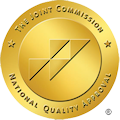The rise in opioid use has triggered a severe public health crisis, affecting countless lives globally. Overprescription and misuse have driven addiction rates and fatal overdoses, highlighting the critical need for specialized rehab centers and treatment. We will explore the history of opioids, their signs and symptoms, and treatment options, tackling the complex challenges of this crisis.
What is
Opioids?
Opioids are a class of drugs that includes both prescription pain relievers and illegal substances like heroin. They are derived from the opium poppy plant or synthesized in laboratories to produce similar effects. These drugs can be taken in various forms, including:
Opioid medications are often prescribed in pill or tablet form to be taken by mouth. This is a common method for managing pain after surgery or injury.
Some opioids, such as morphine and heroin, can be dissolved in liquid and injected into the bloodstream for a faster and more intense effect.
Opioids like heroin can be heated and the vapors inhaled through the nose (snorting) or smoked.
Certain opioids, such as fentanyl, can be administered through patches placed on the skin, allowing the drug to be absorbed into the bloodstream over time.
In some cases, opioid medications may be administered rectally, either as suppositories or through enemas.
Opioids are commonly prescribed by healthcare providers to manage moderate to severe pain, such as pain from surgery, injury, or chronic conditions like cancer. Some commonly prescribed opioids include oxycodone, hydrocodone, morphine, and fentanyl.
However, opioids pose a strong risk of misuse and addiction. When used improperly, they induce feelings of euphoria, relaxation, and sedation. Such misuse often leads to physical dependence, tolerance, and ultimately addiction.
It’s important to use opioids exactly as prescribed by a healthcare professional and never exceed the prescribed dose or frequency. Misusing opioids, such as taking them without a prescription, taking them in higher doses than prescribed, or using them for non-medical reasons, can lead to serious health consequences, including overdose and death. Individuals struggling with opioid misuse or addiction should seek help from an opioid rehab provider or addiction specialist promptly.
What is
the History of Opioids?
The history of opioids goes way back to ancient times, when opium, derived from the poppy plant, was highly valued for its strong pain-relieving qualities. In the 1800s, opioids like morphine and codeine were isolated from opium for medical use, notably during the Civil War. While these drugs were effective for managing pain, they also posed the risk of addiction.
Moving forward to the late 1900s, various factors converged to trigger the start of the opioid epidemic. Pharmaceutical companies aggressively marketed new prescription opioids, such as OxyContin, claiming they were safe and non-addictive painkillers. This led to healthcare professionals prescribing them widely for many conditions, resulting in a significant increase in opioid prescriptions. Unfortunately, these drugs turned out to be highly addictive, causing widespread dependency and misuse. This spike in abuse led to a sharp rise in overdose deaths and addiction rates, marking the beginning of the opioid epidemic.
Since then, efforts have been made to address this crisis. These include stricter regulation of opioids, improved addiction treatment methods, and campaigns aimed at educating both healthcare providers and the public about the risks of opioids and alternative treatments. However, the opioid epidemic remains a complex challenge that requires a comprehensive approach involving government policies, healthcare systems, and community involvement to effectively reduce its harmful effects.
What Is the Difference
Between Opioids and Opiates, and Their Types?
Opioids and opiates are both types of drugs that act on the nervous system to relieve pain. The primary differences lie in their respective origins.
This term refers specifically to naturally occurring compounds found in the opium poppy plant, Papaver somniferum.
This is a broader term that encompasses both naturally occurring opiates and synthetic or semi-synthetic substances that have similar effects on the body’s opioid receptors. Opioids include not only opiates but also drugs like oxycodone, hydrocodone, and fentanyl.
Types of opioids include:
- Natural Opioids (Opiates): These are derived directly from the opium poppy plant. Examples include morphine and codeine.
- Semi-Synthetic Opioids: These drugs are synthesized from naturally occurring opiates. Examples include oxycodone (derived from thebaine, a compound found in opium) and heroin (diacetylmorphine, synthesized from morphine).
- Synthetic Opioids: These are entirely man-made substances that mimic the effects of natural opioids. Examples include fentanyl and methadone.
These various types of opioids are used for pain management, anesthesia, and, in some cases, for the treatment of opioid addiction. However, they also carry a significant risk of addiction, dependence, and overdose, particularly when misused or taken in high doses.
What are
the Signs and Symptoms of Opioid Abuse?
Signs and symptoms of opioid abuse may differ based on the individual and the extent of the abuse. However, common indicators of opioid abuse include:
- Constricted or pinpointed pupils
- Slurred speech
- Drowsiness or nodding off
- Impaired coordination or motor skills
- Shallow breathing or respiratory depression
- Nausea, vomiting, or constipation
- Increased secrecy or lying about drug use
- Social withdrawal or isolation
- Changes in sleep patterns
- Neglecting responsibilities at work, school, or home
- Engaging in risky behaviors to obtain opioids
- Continuing to use opioids despite negative consequences
- Mood swings or emotional instability
- Irritability or agitation
- Anxiety or paranoia
- Depression or apathy
- Poor decision-making or impaired judgment
- Heightened tolerance, necessitating elevated doses to attain desired effects.
- Withdrawal symptoms when not using opioids, such as muscle aches, insomnia, sweating, and anxiety
- Development of opioid-related medical conditions, such as infections from injecting drugs or respiratory problems
What are
the Treatment Options for Opioid Dependency?
Treatment options for opioid dependence typically involve a combination of approaches aimed at addressing both the physical and psychological aspects of addiction. Some common treatment options include:
MAT uses medications like methadone, buprenorphine, or naltrexone to reduce cravings and withdrawal symptoms in opioid dependence, stabilize recovery, and promote abstinence.
Behavioral therapies like cognitive behavioral therapy, contingency management, and motivational interviewing help individuals change attitudes by teaching coping skills and stress management.
Support groups and peer counseling, such as Narcotics Anonymous (NA), provide vital encouragement, accountability, and community for individuals in recovery, offering invaluable peer support for motivation and connection.
Residential treatment programs offer intensive care for severe opioid dependence or co-occurring mental health disorders, including medical detox, therapy, and counseling tailored to opioid addiction.
Outpatient programs provide flexible care for mild opioid dependence, offering counseling, medication management, and support while allowing individuals to maintain daily responsibilities.
Integrated care combines treatment for substance use and mental health conditions, boosting recovery chances with tailored, comprehensive care.
Holistic therapies like mindfulness meditation, yoga, acupuncture, and art therapy complement traditional addiction treatment by promoting relaxation, stress reduction, and well-being.
Our opioid rehabilitation centers provide tailored treatment programs that combine medication, therapy, support, and lifestyle adjustments, customized to each individual’s unique needs and situation. It’s crucial for those seeking treatment to collaborate closely with healthcare experts to devise a personalized plan that enhances their prospects for a successful recovery.
Why are
Opioid Treatment Programs Necessary?
Opioid treatment programs (OTPs) are essential for addressing the widespread issue of opioid addiction. These programs offer evidence-based treatments like medication-assisted treatment (MAT) combined with counseling to help individuals overcome addiction. By providing a structured environment, OTPs reduce the risk of health complications and the spread of infectious diseases.
Additionally, they play a crucial role in preventing overdose deaths by offering overdose reversal medications and education. OTPs support individuals in their recovery journey through comprehensive services, ultimately reducing criminal activity associated with addiction and improving public safety. Overall, OTPs are vital components in combating the opioid epidemic, offering support and resources to individuals seeking to break free from addiction and rebuild their lives.
What is
Dual-Diagnosis Treatment for Opioid Abuse?
When considering opioid rehab, it’s crucial to assess whether dual-diagnosis treatment is needed. Heroin addiction, for instance, often increases the likelihood of developing mental health issues like anxiety or depression. Additionally, many substance abusers may use drugs to cope with unknown mental health issues, worsening addiction in a self-medicating cycle.
Dual-diagnosis treatment addresses addiction and mental health issues together, promoting comprehensive healing and reducing relapse risk. Common co-occurring mental disorders include depression, bipolar disorder, anxiety disorders, PTSD, and ADHD.
At California Addiction Treatment, we recognize that many seeking opioid rehab may also require mental health support. Our dual-diagnosis treatment program is designed to tackle substance abuse and mental health challenges simultaneously, ensuring a holistic approach to recovery.
Opioid Rehab Center in Huntington Beach
California Addiction Treatment is a treatment center in Huntington Beach that offers hope and support for those struggling with opioid addiction. Our specialized opioid rehab program is designed to provide comprehensive care, addressing both the physical and emotional aspects of addiction. With a team of experienced professionals, personalized treatment plans, and a supportive environment, we are committed to helping you reclaim life from addiction’s grasp. Don’t let opioids control your future– start recovery today. Reach out to California Addiction Treatment and start your journey towards a healthier, happier life.

Dr. Deena Manion LCSW #20628, a Doctor of Psychology and Licensed Clinical Social Worker since 1993, is the Co-Founder of California Addiction Treatment Center. She brings extensive experience in addiction and mental health from her previous roles at prominent recovery centers and her private practice in Los Angeles and Agoura Hills, CA. Dr. Deena has also appeared as an expert on Dr. Phil’s show and podcast, as well as various other TV programs and documentaries, sharing her expertise in mental health and addiction. Her goal is to leverage her clinical skills in the entertainment industry to reach a wider audience, making her a valuable asset in the field.


